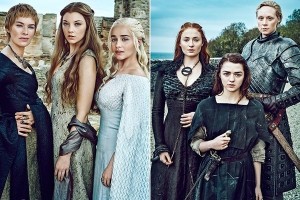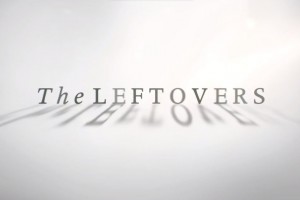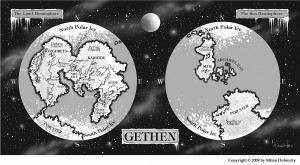Saad Khan
April 26th, 2016
ENGL 146 – Final Essay
A Commentary on Character Archetypes and Speculative Fiction
We all know the “Chosen Ones.” The Harry Potter’s, Anakin Skywalker’s, Ender Wiggin’s of the world(s). It is a term that is thrown around so frequently in pop culture that it’s become common place in film, television, and literature. There are pros and cons to the Chosen One persona. The story can run through this character and have the entire plot centralize itself based off of the Chosen One. This is typically beneficial for stories that, outside of the character and the supporting cast, are superficial in terms of world-building and thematic development, which thereby allows for the writer and readers to not worry about extrinsic story elements and focus solely on a handful of characters, with the “Chosen One” being at the forefront.
As a result, this can potentially lead to stories becoming incredibly formulaic and predictable, as evident in the countless knockoff stories and movies that we see that are just a crude rehashing of original stories that we’ve already seen play out on more than one occasion. How many times are we going to see a book/film series about a character discovering that they have special abilities unbeknownst to them until some elderly figure comes along to break the news? And what are the odds going to be that said character who just realized that they are “unique” and “special” will have some major role to play in this new universe or world that they’ve now become a part of? It’s gotten to the point where there isn’t even any shame about how original stories are blatantly being cloned and replicated for mass market consumption, and this has especially been the case after the successful film adaptations of the Harry Potter series as major corporations seek to milk the next cash cow they find. One of the primary examples of this in my opinion is the comparison between The Hunger Games series and The Divergent Series books and theatrical adaptations. Both series were written as novels originally and subsequently adapted into films almost immediately after publication during the power vacuum that was left behind by the completion of the Harry Potter films.
In a post-apocalyptic world (what’s new) where there is now an all-powerful regime that rules over a marginalized nation-state using scare tactics and propaganda to keep its citizens in line, a young Mary-Sue archetype rises out of despair and ruin to fight back and take down this regime. And hey, it’s a trilogy too! Of the two aforementioned series, which one did I describe? Both The Hunger Games and Divergent series share so many thematic elements and plot devices that it is incredibly difficult to tell the two apart, and there is definitely a déjà vu feeling no matter which series is read or watched first. When comparing each series’ “Chosen Ones,” there really isn’t that much different between the two of them either. Down to what outfits the characters wear (there’s no way that skin tight black leather jumpsuits are conducive for staging large-scale rebellions), Katniss Everdeen and Tris Prior share a plethora of similarities and very little differences to the point that it’s almost scary. At least one parent is dead, there’s a doe-eyed, blonde tousled-hair love interest, and they go to toe-to-toe with the head honcho of the opposing faction in some sort of confrontation and end up on top. Even their first names end the same way phonetically.
The concept of the Mary Sue/Gary Stu archetype and the “wish fulfillment” tag that this type of character usually gets is nothing new to film and literature. It’s been around since Wonder Woman and Superman were first created and still exist in the forms of the Skywalker family (yes, Rey is a Skywalker) and the previously mentioned Katniss and Tris. It goes hand in hand with the whole concept of the Chosen One, and is essentially an extension of that element. The issue with this concept however, that recently it’s becoming more and more apparent that stories in this era are being written and produced from a standardized formula that regularly uses these character archetypes, resulting in storytelling having the originality sucked out of it. Consequently, it’s making it much more difficult for those seeking genuine intellectual stimulation and stories that take the readers to new worlds that they’ve never been to before.
Having discussed the Mary Sue/Gary Stu Chosen One framework, I now want to examine to what extent whether some of the works we’ve covered this semester do or do not fit into the above mold that I’ve laid out above and compare them to the “Chosen One” archetype using characters from stories we’ve read, watched, and discussed in class. More often than not, this is a thematic trend we almost always find in science-fiction/fantasy/utopian genres, so it’s important to see if these stories pass the test in terms of whether or not the stories are original or poorly disguised carbon copies of another story.
Ursula K. Le Guin’s Left Hand of Darkness follows the travels of a man named Genly Ai as he circumnavigates a foreign planet in the hopes of getting its inhabitants governments to join the intergalactic coalition that he represents. There are certainly many classic elements found in this novel that are representative of the science-fiction genre – mentions of spaceships, other planets, and an adventure quest. What Le Guin does differently that works however, is that she intentionally builds her world so that it runs through Genly’s character and is intertwined with the plot of the story. As we see different parts of the planet Winter, it’s as new and foreign to us as readers as it is to Genly and we all experience it synonymously. In addition to Genly’s perspective, Le Guin writes from the perspective of Estraven, who is a native to Winter. Using the perspective of Estraven allows for the readers to view Winter from a more critical angle and allows for an even deeper understanding the sociopolitical climate on the planet. Estraven’s perspective, in addition to chapters that tell stories and lore of Winter, help bring about a nearly complete picture of what this world is like. Having the story run through multiple narratives diverts away from the Chosen One concept, which leads for more intake of story material and less rehashing. In fact, it’s almost as if Le Guin is self-aware of this issue speculative genre because Genly on more than one occasion mentions that he isn’t special and that should he fail and die in his mission to bring Winter into the Ekumen, then another will be sent in his place, and that this is a process that is occurring on other planets as well.
An additional example comes in the form of Octavia E. Butler’s Kindred, which is essentially a historical period piece fused with science fiction that is told from the viewpoint of one Dana Franklin who time travels back to the Antebellum south where she is subsequently put into slavery. In Kindred, we see a Mary Sue-esque character in Dana who has these special abilities in the form of time travel that she uses to her advantage in order to combat the harsh realities of slavery in order to fulfill her end goal of getting Rufus Weylin to bear a child with Alice, who is an ancestor of Dana’s. The science-fiction elements of time travel mesh well with the historical setting and provide for a unique story situation, however much of the mechanics of Dana’s time traveling ability are not elaborated upon which forces the reader to go along with it without ever getting a proper explanation. Much of the story is focused on Dana’s mission to get Alice to bear her future ancestor, but I feel that there is so much more that can be explored in this world that Butler created. There is a void in that sense, and personally I finished the novel feeling like I came out empty-handed. In addition to that, realistically the likelihood that Dana would be able to carry that much weight on the Weylin plantation in terms of power dynamics is very low. In the eyes of slaveowners like the Weylins, a black woman with magical powers who disappears and returns out of thin air would probably be considered a witch and killed pretty early on, which is why I liken her to a Mary Sue archetype because from a holistic standpoint she was held far too much power for a slave during the Antebellum period. Overall, I’d say that Kindred in itself was half-formulaic – the premise of the story is very unique and genuinely interesting, however the character archetypes in the novel are definitely very standardized.
Another example of a protagonist thrust into a very unique situation can be seen in Kate Atkinson’s Life After Life, where a girl named Ursula is constantly reliving her life in a very cyclical manner. If she dies, she simply starts back over. Soon, she realizes through several déjà vu experiences what is happening and makes it her mission to kill Adolf Hitler and prevent World War II from happening. Now, the situation in this story is unique in the sense that Ursula pretty much lives a pretty normal life (lives?), albeit over and over again. There is nothing that Atkinson says to imply that Ursula is special or destined for some greater calling by any means – even after she kills Hitler she dies and starts right back over again, indicating that the whole notion of having that purpose of existence to begin with was a foolhardy one. For all we know, Ursula’s situation could be one that many are experiencing, Atkinson certainly leaves that door and many doors open for that school of thought to gain validity. To me, of all the novels we’ve read over the course of the semester, this was certainly the most original in terms of concept and character archetype. Just like she doesn’t truly fit in in the novel, Ursula does not fit any type of preconceived character mold, and neither does this story in general. It’s refreshing and leaves just the right amount of ambiguity to allow the reader to return to this book and read it again to gain more insight and possibly other perspectives as well. That being said, it would not surprise me whatsoever if similar stories are released that follow the same track as this one, case in point being the Tom Cruise movie Edge of Tomorrow, which was released a year after Life After Life (with a sequel on the way now too) and also deals with the idea of reliving the same life over and over again.
There are also stories that are incredibly ambiguous in terms of who the central character is and what the overall end game of the story is as it unfolds. These stories tend to have more world-building and are very vast in scope. Often times there is a “quest” of sorts that eventually gets revealed to a character, which starts to lean towards the “Chosen One” mold, but there are also stories that are essentially case studies of, to put it in incredibly crude terms, “if people lived in this sort of world with this type of sociopolitical environment, what would it be like?” This is essentially the definition of speculative fiction. A novel like Left Hand of Darkness certainly could fit into this type of mold, but it is still a story that’s more micro than macro in the sense that we only really have two main characters. A better example can be seen in George R.R. Martin’s/HBO’s A Song of Ice and Fire/Game of Thrones, since (as of right now) it doesn’t seem like there is one central protagonist/Chosen One that has stood out among the mass of characters in George R.R. Martin’s densely populated story.
Game of Thrones is more so a survey of the world of Westeros and how different characters of different status levels deal with the situations they are placed in. The story is massively broad in scope, Martin is so incredibly detailed in the world that he has created from detailing its histories from essentially the beginning of time to the many types of religions and belief systems to the sociopolitical and economic issues as well. Martin could honestly choose any time period to novelize from the world he’s created since its history is so rich, but the time period he chooses strongly mimics our own as he focuses on prominent noble houses of the Realm jockeying for power. Wars are fought, betrayals ensue, and quite a large amount of people die. All of that aside, what’s most fascinating about Martin’s world of Westeros is that thus far into the story, it’s not really about the characters, it’s more about the world and how the characters are responding to situations in the world all at different levels. There is no “quest,” and until the White Walkers finally decide to make an appearance in Westeros (five books and six seasons in and still nothing), in the eyes of Westeros’s inhabitants there really is no singular enemy that everyone must unite against to defeat once and for all in order to have a happily ever after. The Lannisters are busy fighting to keep their thrown, Daenerys Targaryen is ruling as queen on a completely different part of the map, and Jon Snow is somewhere up north knowing nothing, as per usual. These are just a few viewpoints that Martin features throughout his novels – there are countless narratives that he utilizes that paints a picture from the top, bottom, and middle of the societal ladder. The world of Westeros is much like our own in the sense that it is virtually impossible to keep up with all the storylines and plot threads that run throughout the novels and the show. It’s like reading a comprehensive fantastical history book that gives a almost objective telling of everything that happened during this time period in Westeros’s history.
HBO seems to really like ambiguity, and like Game of Thrones, its series The Leftovers is another example of speculative fiction that is more spectator-based. The show is essentially a case study of what society would be like after a rapture-like event occurs where two percent (roughly 150 million people) of the world’s population vanishes into thin air. As a result, major religions begin to decline and other cults and sects rise to prominence. While the majority of the show runs the viewpoint of Kevin Garvey, chief of police in Mapleton, New York, the shows explores multiple viewpoints, expanding on the concept seen in novels like Left Hand of Darkness. There are also solo spin-off episodes from the viewpoint Nora Durst, who lost her entirely family to the Departure, as well as from the perspective of Matt Jameson, a Reverend who still very much a devout Christian despite the religion’s decline post-Departure. The world of the show continued to expand as it moved into the second season, featuring viewpoints from the Murphy family. This show, like Game of Thrones, is more of a social commentary than anything. There isn’t any apparent end game at the moment, and while a case could be made that Kevin Garvey has some special role to play due to his bizarre sleep-walking issues and twice resurrection à la Christ, I think his situation is just one of many situations that is unique to only him and will never broaden beyond the scope of himself.
In the same vein, I think that this is the case for many other characters in the show as well. In the first season, a man named Holy Wayne deemed himself a prophet and claimed he could “hug” away people’s pain, only to die after brutally self-mutilating himself. Matt’s paraplegic wife Mary miraculously comes out of her vegetative state, but in the realm of this show this extraordinary event is coupled with a very long chain of extraordinary occurrences. Who is more special and “chosen” – a person who has been died and brought back to life twice or someone who has been in a vegetative state for roughly three and a half years who breaks out of her coma and also be pregnant? Such circumstances create ambiguity and speculation, hence the genre of speculative fiction, and as a whole allows shows like The Leftovers to be incredibly gripping and compelling because it’s unpredictable and doesn’t any kind of formula of storytelling.
Unpredictability is the key to originality in storytelling. Not be able to guess the direction of a plot, the arc of a specific character, creates much more enthralling stories that draws the attention of more readers and viewers. The culture of literature, film, and television is currently at a point where it needs to be resuscitated as more and more stories are starting to blend together and become impossible to tell apart from each other. This starts with character creation. Having characters who are original and not just extensions of wish fulfillment and don’t fit any kind of mold is the first step. The next step is to put them in a world as unique as the character itself. A completely original character is wasted if they get put into a setting or situation that any other character could be in. Vice versa, if the character is formulaic and put into a setting or situation that is unique and special, than that situation is also wasted. I’ve found that over the course of this semester, speculative commentary is the best way to keep stories unpredictable and exciting. In order to keep this form of storytelling alive, originality and unpredictability are going to be the only ways to break the archetypes and molds in place in this medium.



